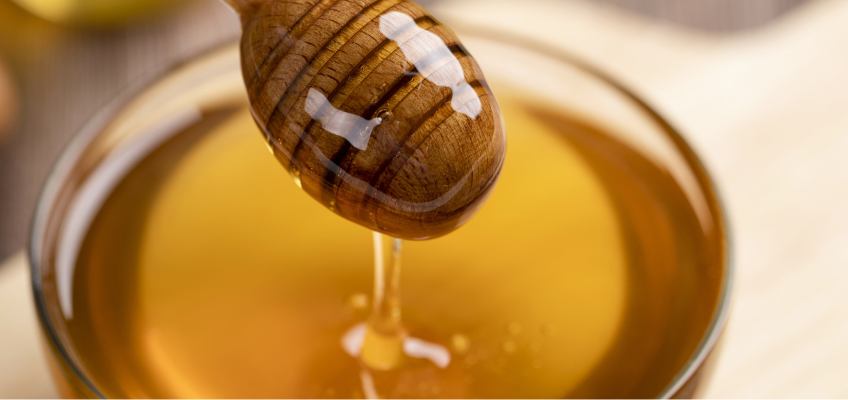
How to Backsweeten Mead – Hidden Legend Winery’s Guide
Are you finding that your homemade mead is too dry and missing that perfect sweetness? Well, maybe you should consider backsweetening, a useful technique to balance flavors and enhance your drink. This guide will show you how to sweeten mead with simple methods, like using raw honey or fruit juice, without ruining its character.
Key Takeaways
- Backsweetening adds sweetness to mead after fermentation stops. Use honey, fruit juice, or blend with a sweeter batch for balanced flavor.
- Stabilize mead with potassium sorbate and sulfites before adding sugar. This prevents re-fermentation and bottle explosions.
- Gradually add sweeteners like honey or juice while tasting the mead often. Avoid over-sweetening by testing in small amounts first.
- Monitor for signs of re-fermentation, like bubbles or pressure in bottles, to prevent accidents from “bottle bombs.”
- Store sweetened mead in cool, dark places and age it for at least six months to improve flavors over time.
Understanding Backsweetening
Backsweetening adds sweetness to finished mead without restarting fermentation, balancing flavors in dry meads, and adjusting residual sugar for desired sweetness. This step is perfect for still mead, apple mead, or a bone-dry batch needing a touch of honey or other sweeteners.
Fermentation must fully stop before adding fermentable sugars like honey, maple syrup, or apple juice. Stabilize the mead with potassium sorbate and potassium metabisulfite to prevent re-fermentation. Without this step, added sugar can restart fermentation and raise carbon dioxide levels, leading to bottle bombs.
Preparing for Backsweetening
To get started, you’ll first need to make sure that the mead has finished fermenting. Use a hydrometer to check the specific gravity; the reading should stay stable for several days, showing no active fermentation. Essentially, this step prevents re-fermentation after adding more sugar or honey.
Then, it’s time to stabilize the mead before sweetening it. Add Campden tablets and potassium sorbate to stop any remaining yeast from growing, and wait patiently for 24-48 hours after adding these to let them work fully.
Consider cold-crashing your mead if needed by placing it in a fridge for a few days to help remove leftover yeast or sediment. Work with clean tools and equipment during this process to keep everything safe and fresh!
Methods of Backsweetening
There are several easy ways to back-sweeten mead, each adding its own unique flavor and character—keep reading to find your perfect method!
Using Honey or Other Sugars
First up, adding honey is a popular way to back-sweeten mead. Use warm water to dissolve the honey for easy mixing, and remember to start with a small amount, then taste before adding more honey. This helps you reach your desired level of sweetness without overdoing it.
Priming sugar or other sugars can also work well, so choose one that complements your mead’s flavors. Always check the alcohol content and monitor the fermentation process closely if adding any sugar, as too much could restart fermentation or increase carbonation unexpectedly.
Using Fruit Juices or Concentrates
Alternatively, fruit juices or concentrates can add sweetness and bold flavors to your mead. Grape, apple, or berry juices work well for boosting taste, and they also enhance the color and body of the final product.
Pour a small sample of mead into a glass and mix in juice slowly to test flavors. Once satisfied, scale it up in your bottling bucket, but once again, be careful with high sugar content as it may restart fermentation. You can also cold crash your batch or use specific yeast strains to prevent this issue.
Blending with a Sweeter Batch
It might sound strange, but blending mead with a sweeter batch is an easy way to adjust flavors. Use a finished, sweeter mead for this process, while making sure that the sweetened batch complements your current brew’s taste.
Mix small amounts first to test the balance, tasting as you go and aiming for harmony between sweetness and alcohol level. Keep notes on how much of each batch you use for consistency in future gallons.
Step-by-Step Backsweetening Process
To ensure that the process is as straightforward as possible, let’s break down the backsweetening process from start to finish, step by step. Obviously, you should start by checking the sweetness and flavor of your mead, slowly adding sweeteners while tasting to get it just right. Don’t get carried away!
Measure and Taste Your Mead
First, take a small sample of your mead and use a hydrometer to check the potential ABV and sweetness level. This helps you see if it’s bone dry or close to your desired taste.
Taste the mead carefully, and try to notice if it needs extra honey, sugar, or other sweeteners. Keep in mind that adding sugar can affect flavors, and more alcohol might develop if fermentation restarts.
Add Sweetener Gradually
Next, add a small amount of sweetener, like honey or fruit juice. Stir it well and taste the mead, and adjust slowly to avoid making it too sweet. Too much sweetener at once might ruin your first batch, and you wouldn’t want that, so consider using a plastic bottle or beer bottles for testing before bottling fully.
Monitor for Re-Fermentation
Now, you’ll need to check your mead regularly after adding sweeteners. Adding sugars, like honey or fruit juice, can wake up leftover yeast, and as we previously discussed, if the yeast starts eating the sugar again, it may cause re-fermentation.
Watch for signs like bubbles or pressure building in sealed bottles. This could lead to “bottle bombs,” which are dangerous and messy. Stabilizing your mead with sulfites or sorbates before backsweetening helps prevent this risk, though. Don’t forget to always store sweetened mead in a cool place to slow down any unwanted activity!
Troubleshooting and Tips
It’s imperative that you watch out for signs of re-fermentation after sweetening, as it can cause issues. Keep your bottles stored properly to avoid pressure buildup, and keep the following tips in mind.
Preventing Bottle Bombs
Start by stabilizing the mead before adding sweeteners, using potassium sorbate and sulfites to stop any possible re-fermentation. This keeps yeast from becoming active again.
Remember: never bottle too soon. Ensure fermentation has fully stopped and the mead is clear, and for extra assurance, check with a hydrometer to confirm stable readings over several days. High ABV meads are less likely to re-ferment, but proper precautions still matter. Finally, use sturdy bottles for final storage as an added safety measure.
Adjusting Flavors After Sweetening
Taste your mead after sweetening, and if it feels too sugary, balance it with a bit of acidity. Add lemon juice or tart fruit concentrate in small amounts to adjust the flavor. For a smoother taste, try blending with spices like cinnamon or vanilla. Let the mead rest for a few days before tasting again, as flavors can change over time.
Storing and Aging Sweetened Mead
After you’ve completed your backsweetened mead, store it in a cool, dark place. Keep the bottles upright to prevent leaks or contamination, and ensure they are sealed tightly to protect the wine.
Be patient, because aging can improve flavor. Over time, sweetness and other flavors blend better. Wait at least six months for the best results, but longer aging often enhances mead further.
Conclusion
Overall, sweetening your mead is a fun and creative process; a little honey or juice can bring out amazing flavors! Take your time, taste as you go, and enjoy the results. Hidden Legend Winery loves sharing mead-making tips and produce to inspire you to create magic in a glass!
FAQs
How do I backsweeten mead safely without restarting fermentation?
To backsweeten mead safely, stabilize it first using potassium sorbate and potassium metabisulfite after fermentation has finished. This prevents the yeast from restarting, so you can add sweetness without unwanted fermentation. Always wait at least 24 hours after adding stabilizers before sweetening.
How much honey should I add when backsweetening?
Start by adding 1 to 2 ounces of honey per gallon of mead, mix well, and taste before adding more. This gradual approach ensures you don’t oversweeten. Record how much honey you use so you can replicate your results in future batches.
Can I use hot water to dissolve honey before adding it?
Yes, mixing honey with a bit of hot water helps it blend more easily into the mead. Let the mixture cool to room temperature before adding it to avoid any risk of harming your stabilized mead or affecting its clarity.
Will backsweetening affect carbonation if I want a sparkling mead?
If you’re planning to carbonate your mead, avoid backsweetening before bottling unless you plan to keg and force carbonate. Otherwise, the added sugars can cause over-carbonation or even bottle bombs. Stabilized mead, sweetened after fermentation, is best kept still or kegged.
Can I back-sweeten with other ingredients besides honey?
Absolutely! While honey is traditional, you can also use fruit juices, spices, or non-fermentable sweeteners like stevia. Just be mindful that added flavors should complement the mead’s profile, especially if it’s a beer-like hybrid style.
Does backsweetening change the way mead ages?
Yes, backsweetening can soften harsh notes and round out flavors, especially in dry meads. Over time, the sweetness integrates, making the mead smoother and more balanced. Even a lightly mead-sweetened batch can improve significantly with age.
How Long Does It Take to Make Mead?
How to Bottle Mead for Aging and Storage
Help Save The Bees By Drinking Mead


